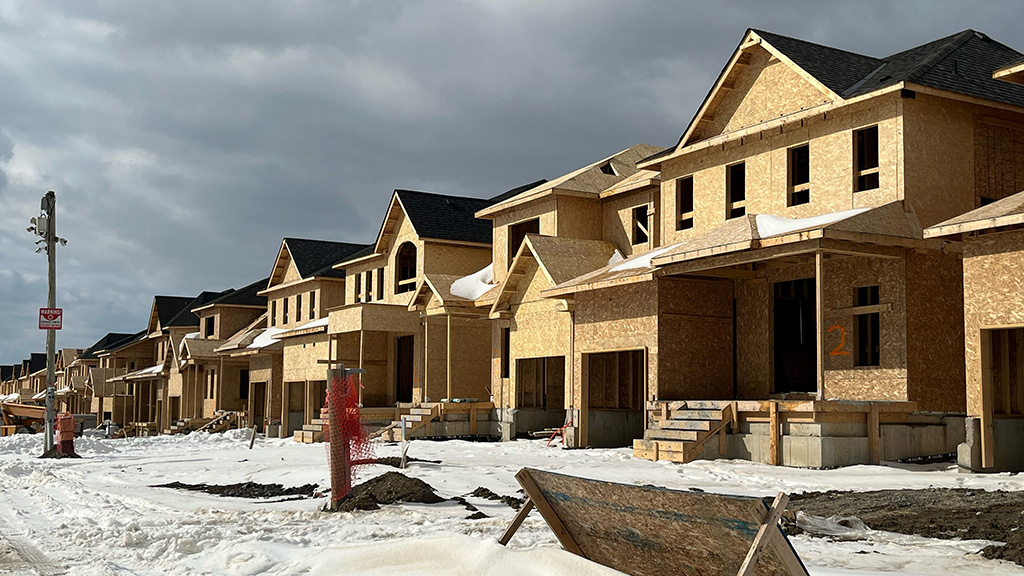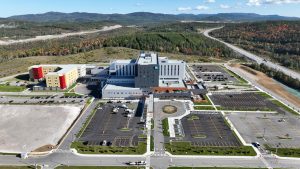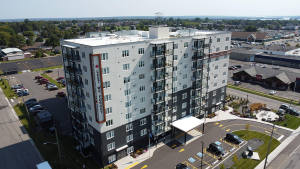All levels of government must work in unison to solve the dire housing crisis as cities like Hamilton, Burlington and Grimsby are seeing an exodus of talent and skilled trades, the very people needed to build the homes, warns Mike Collins-Williams, CEO of the West End Home Builders’ Association (WEHBA).
“It requires all hands on deck,” he says. “We need the industry to be at the table and we need the federal government, the provincial government and the municipal governments to treat this like the crisis it is and work together to increase the supply of housing.
“Part of that is regulatory in terms of the planning approvals system, part of that is taxation and part of that is a focus on educating the next generation of skilled trades as well as having immigration policies to attract those with skills around the world right here into Ontario to build the homes that we need.”
A report produced recently by the Smart Prosperity Institute (SPI) with support from the WEHBA and Hamilton Chamber of Commerce concludes failing to address the housing shortage will cause living in Metro Hamilton to become less affordable and strain the social and economic viability of the community.
The report, called Who Will Swing the Hammer, also notes Hamilton, Burlington and Grimsby find themselves at the centre of a troubling paradox. The shortage has caused home prices and rents to rise higher than other communities, which risks pricing out the skilled trades who build them.
“There’s a lot of young people and very talented people with skills that are giving up on Ontario altogether and they’re moving to places like Edmonton, Halifax, Calgary, or they’re leaving Canada,” says Collins-Williams.
“We’re potentially entering into a bit of a vicious negative feedback loop of, ‘Who’s going to build the homes, the infrastructure, the roads, the schools, the hospitals, if the tradespeople can’t afford to live here?’”
Metro Hamilton lost almost 1,800 people to other provinces between 2020 and 2022. The figure is higher than other comparable metro areas in Ontario and nearly double the loss of metro London.
According to the report, Hamilton and Burlington will need to double homebuilding over the next decade to meet the provincial target of building 47,000 and 29,000 units, respectively, over the next decade. There is already a pre-existing housing shortage of roughly 14,500 units in Hamilton alone.
Those numbers will be a monumental challenge that will require substantially more skilled trades, the report states.
The scale of change needed to reach that target is also significant, as only in a handful of years out of more than three decades has new housing construction for the area reached half of the provincial target.
“Failure to construct enough housing, mainly attainable family-friendly housing, will make it challenging for Hamilton employers to attract and retain talent, whether in the private or public sectors,” the report states. “Hamilton already lacks affordability for families; the region cannot allow the problem to worsen.”
Collins-Williams says it appears there is a bit of a “musical chairs effect” whereby people leave Toronto to buy a home in Hamilton and people in Hamilton who may have less resources are being displaced and head down the QEW to St. Catharines or along Highway 403 to Brantford and Woodstock.
While there is no silver bullet to remedy the problem, he says it is critical all three levels of government are on the same page.
The federal and provincial governments deserve top marks for focusing on the skilled trades shortage in the last couple of years, says Collins-Williams, and appear to be heading in the right direction.
“But you don’t snap your fingers and the problem’s solved. This needs relentless attention over the next decade to sort of deal with the retirements and have that next generation of skilled trades. The government is on the right track, we just need to continue that relentless approach.”
Collins-Williams says there are no easy solutions and he is quite concerned about the future.
“The situation is so severe that the solutions are, in some cases, not politically popular and it requires perseverance and toughness, frankly, from politicians that don’t always have a strong track record of making those tough decisions.”
Failure to construct enough housing, is going to make living in Hamilton and other nearby communities less affordable and strain the social and economic viability of the community, says Collins-Williams.
“It’s not just about housing,” he points out. “It’s about our workforce and our people and how we are going to attract and retain talent, not just to build the next generation of housing but (to have) nurses, teachers, police officers, firefighters. We’re pricing the very fabric of our community out of the market.”
Mike Moffatt, senior director of the SPI, says Hamilton’s housing costs relative to other cities like Brantford or London is a primary driver of young families leaving the area.
“The high cost of housing is like a payroll tax for Hamilton area employers. If they wish to retain their workforce, there will be significant upward pressure on wages.”











Recent Comments
comments for this post are closed